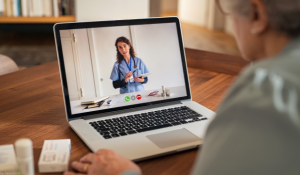
Teledentistry is not new, but it has surged in popularity, promising convenience and expanded access to dental care. However, as with any innovation, it comes with its own set of challenges.
Some critics argue that teledentistry might undermine the quality of dental care, raising concerns about diagnosis accuracy, treatment efficacy, and patient safety. But does teledentistry truly compromise care quality, or is it a matter of leveraging the right technology to achieve optimal outcomes?
The Potential Pitfalls of Teledentistry
- Diagnosis Accuracy Concerns: One of the primary criticisms of teledentistry is the concern that remote evaluations may lead to misdiagnosis or missed issues. Without a physical examination, it can be challenging for dental professionals to assess conditions accurately. Issues such as subtle tooth decay or periodontal disease may be difficult to diagnose through images alone.
- Limited Hands-On Treatment: Teledentistry primarily facilitates consultations and follow-ups, but certain procedures and treatments require in-person visits. This limitation means that while teledentistry can handle routine check-ups and minor consultations effectively, it may fall short for more complex dental interventions.
- Patient Safety and Quality Assurance: There are concerns about whether teledentistry platforms ensure consistent quality and safety standards. The absence of a physical presence raises questions about how well care protocols and hygiene practices are maintained during virtual consultations.
Technology Ensuring High-Quality Teledentistry Outcomes
Despite these concerns, teledentistry can offer high-quality care when supported by advanced technology and best practices. Here are the top 7 key strategies and technologies that can enhance the effectiveness of teledentistry:
-
High-Resolution Imaging: Investing in high-resolution cameras and intraoral scanners is crucial for accurate diagnostics. Clear, detailed images and videos can help dental professionals assess conditions more accurately from a distance. Technologies like 3D imaging can provide a more comprehensive view of oral health issues.
-
Integrated Diagnostic Tools: Teledentistry platforms that integrate diagnostic tools with telehealth capabilities can bridge the gap between remote consultations and accurate diagnoses. For example, tools that allow for real-time sharing of diagnostic data and patient history can enhance the evaluation process.
-
Secure and Compliant Platforms: Utilizing secure, HIPAA-compliant teledentistry platforms is essential to protect patient information and ensure adherence to privacy standards. These platforms should offer robust encryption and secure communication channels to maintain confidentiality and trust.
-
Comprehensive Training for Practitioners: Dental professionals should receive specialized training in using teledentistry tools and platforms. Understanding how to effectively conduct remote examinations, interpret digital images, and communicate with patients through virtual means can improve the quality of care delivered.
-
Clear Protocols and Guidelines: Establishing clear Standard Operating Procedures for teledentistry consultations can help maintain care standards. This includes defining when a patient needs an in-person visit, setting criteria for follow-up care, and ensuring that all remote consultations adhere to established clinical guidelines.
- Patient Education and Engagement: Educating patients on how to use teledentistry platforms effectively and what to expect during virtual consultations can improve the overall experience and outcomes. Engaging patients in their care and ensuring they understand the limitations and benefits of teledentistry can lead to better compliance and satisfaction.
- Continuous Monitoring and Feedback: Regularly evaluating the effectiveness of teledentistry services through patient feedback and outcome assessments can help identify areas for improvement. Implementing a system for tracking and addressing issues can ensure ongoing enhancement of the care provided.
Teledentistry is transforming dental care by offering greater accessibility and convenience. However, addressing concerns about care quality requires leveraging advanced technology and adhering to best practices. Invest in your practice technology to ensure great outcomes for incorporating teledentistry into your practice.
